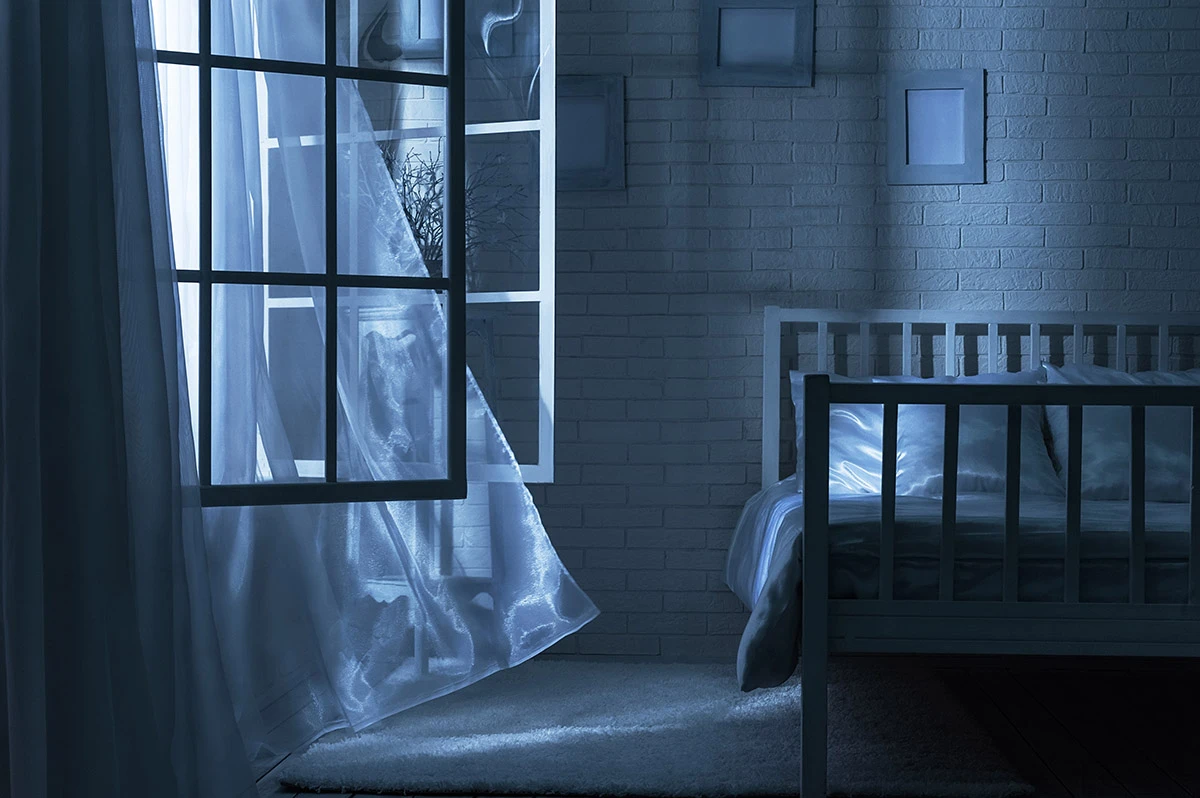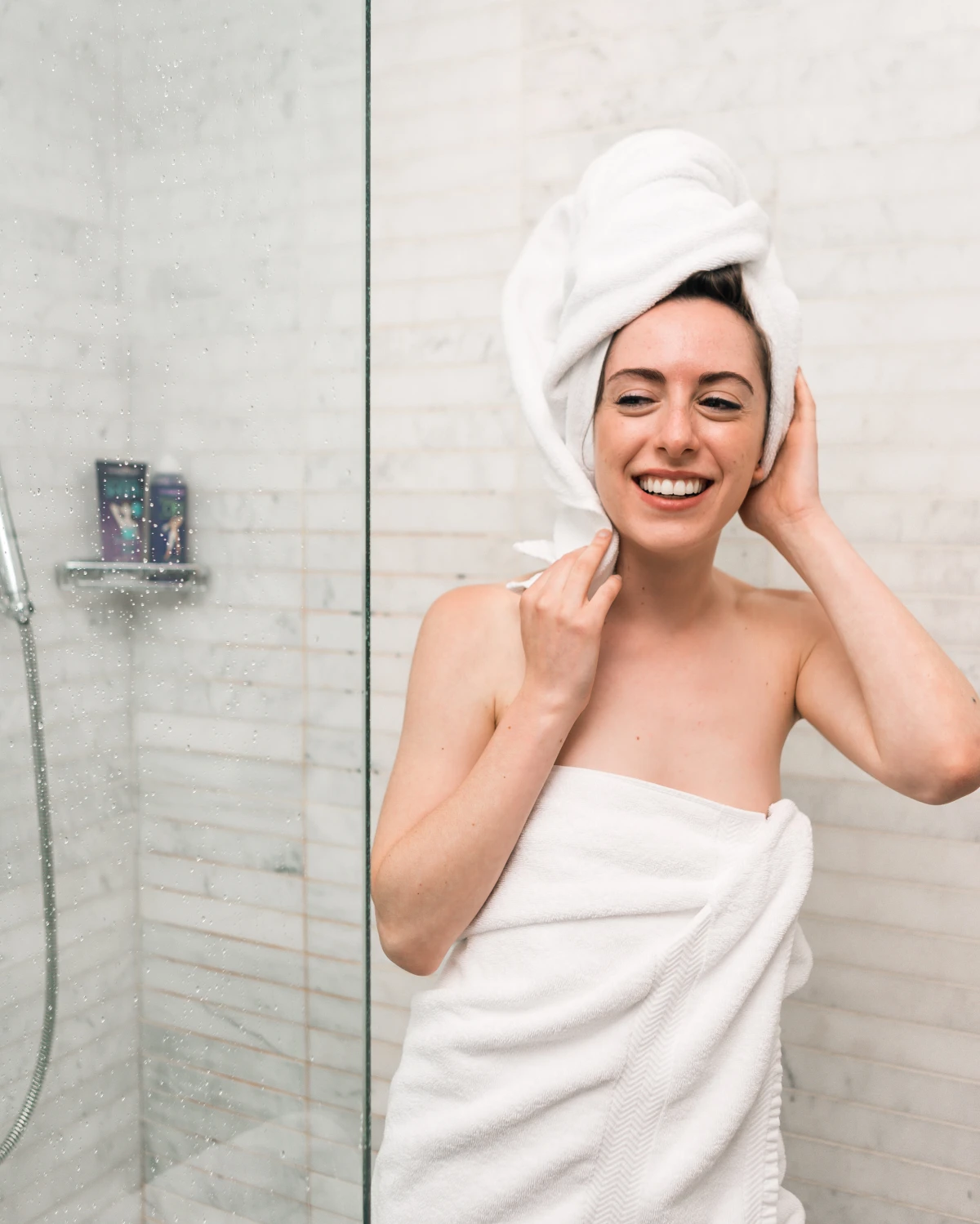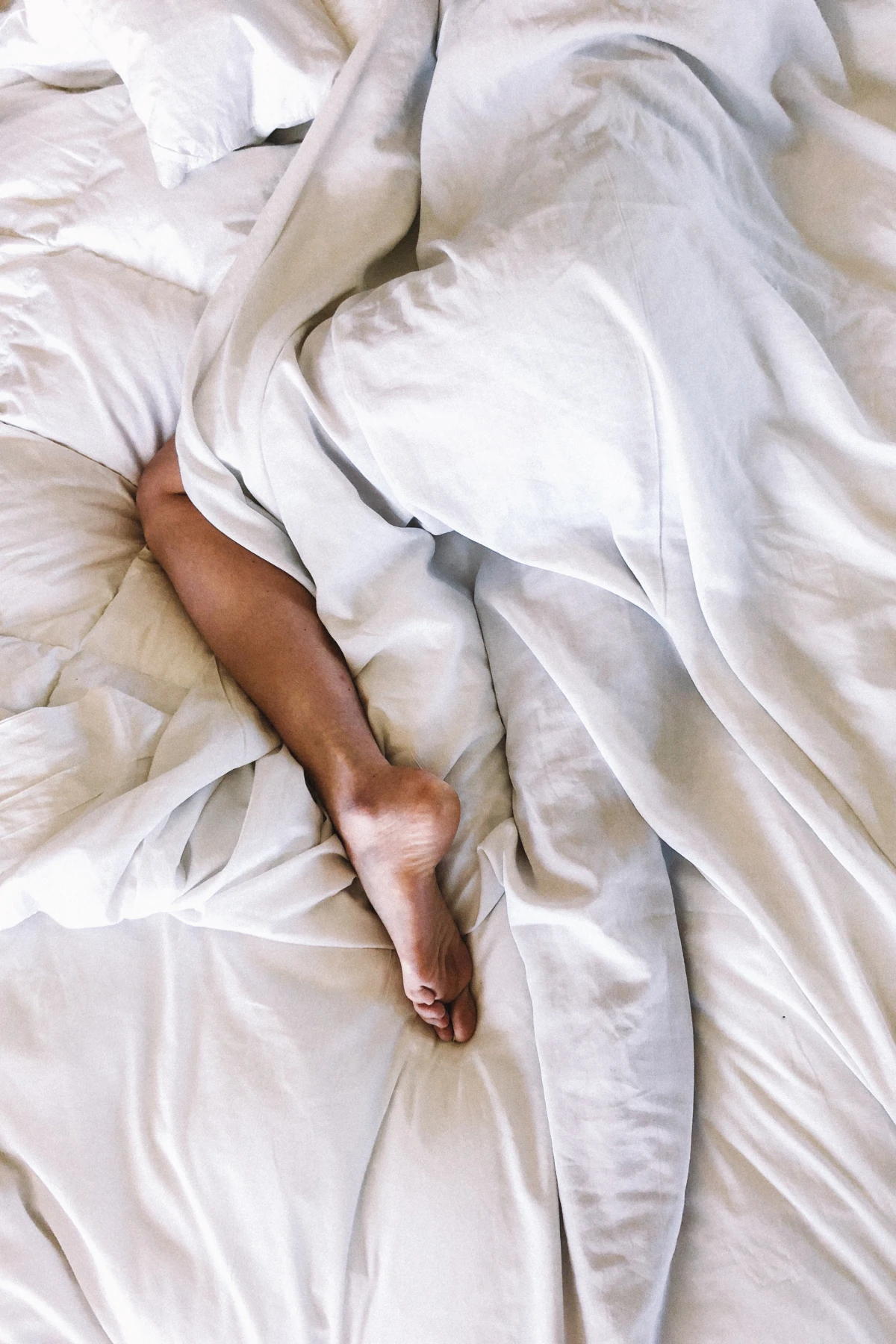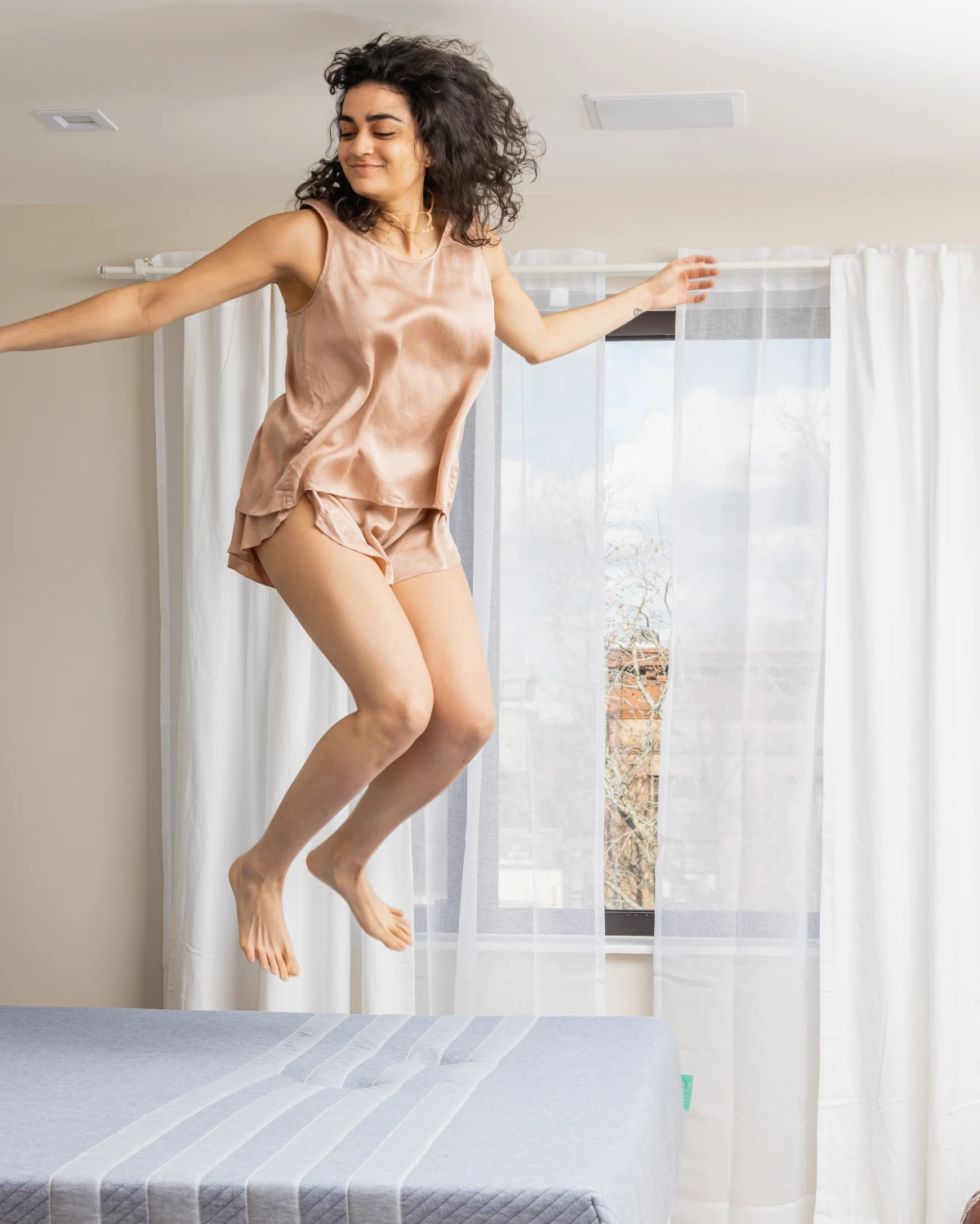Can’t Sleep Because It’s Hot? Here’s How to Actually Fix It
For the better part of two decades, my world has been attics, basements, and stuffy bedrooms. As a home performance consultant, I figure out how houses breathe—or, more often, how they suffocate. But the job isn’t really about insulation and airflow. It’s about people. And the number one complaint I hear, especially when the weather turns warm, isn’t about high energy bills. It’s about sleep. Or the lack of it.
In this article
People tell me about tossing in damp sheets, waking up feeling like they never slept, and starting their day already exhausted. And they’re right to be worried. Quality sleep isn’t some luxury; it’s a non-negotiable part of being a healthy human.
When your bedroom is hot, it actively sabotages the deep, restorative sleep your brain and body desperately need. But here’s the good news: you have way more control than you think, and it doesn’t always mean cranking the A/C until your electric meter spins off the wall. Real temperature management for sleep is a three-part game: controlling your room, managing your body, and dialing in your bed’s microclimate. I’ve walked hundreds of people through these exact methods. Let’s get you sleeping again.

First, a Super Quick Science Lesson (I Promise It’s Useful)
Before you touch a single thing, you need to know what you’re up against. Honestly, understanding the ‘why’ makes all the ‘how-to’ stuff work ten times better. Our bodies are hardwired to sleep cool. To even begin the process of falling asleep, your internal core temperature needs to drop by a couple of degrees. This drop is a key signal that tells your brain, “Okay, time to release the melatonin!”
A warm room fights this natural process. Your body has to struggle just to shed heat, which messes with your ability to get into that deep, restful sleep. This is where basic physics comes into play:
- Conduction: That’s heat moving through direct contact. It’s the reason your memory foam mattress feels like a personal oven after an hour—it’s absorbing your body heat and has nowhere to put it.
- Convection: This is heat moving through the air. A simple fan creates convection, pushing warm air away from your skin and making you feel cooler.
- Radiation: This is heat traveling in waves. It’s the warmth you feel coming off a wall that was in the sun all afternoon, long after the sun has gone down.
Our entire strategy is about manipulating these three things. Experts say the sweet spot for sleep is between 60 and 67°F (15-19°C), which can feel impossible to hit. Don’t worry about the exact number. The goal is to create a personal comfort zone that lets your body do its thing.

Your Room: The First Line of Defense
Before you even think about cooling your body, you have to stop your room from working against you. A bedroom that’s been soaking up sun all day has a massive thermal load. The walls and furniture are literally radiating heat at you. Here’s how to fight back.
Get Strategic with Your Windows
Your windows are basically giant heat portals. The most common mistake I see is people leaving their blinds open all day. That’s like leaving the oven door cracked. During the day, you absolutely must block the sun, especially on the south and west sides of your house.
Blackout curtains are a great investment here. A little pro tip: look for ones with a white or reflective backing. This bounces the sun’s energy back outside instead of just absorbing it. Even hanging a plain white sheet in the window is way better than nothing. The key is to create an insulating air gap between the curtain and the glass, which is why curtains that seal against the wall work so much better than ones that just hang freely.

The Magic of a Cross-Breeze
Once the sun goes down and the outside air is cooler than the air inside, it’s fan time. Opening one window is okay, but creating a powerful, directed airflow is a game-changer.
I teach all my new hires a technique we call the “Push-Pull Method.” It’s simple. You place a box fan in a window on the coolest side of your house, facing IN. This pushes cool air into your home. Then, you put another fan in a window on the opposite, hotter side of the house, facing OUT. This second fan powerfully pulls all the hot, stale air that has risen to the ceiling and expels it. I had one client who was about to spend thousands on a new A/C unit. We set up two $25 box fans like this, and he called me the next day, absolutely shocked that his bedroom was 10 degrees cooler.

Studio Apartment Hack: What if all your windows are on one wall? Good question. You can still create some airflow. Open two windows as far apart as possible. Point one fan IN through one window and the other fan OUT through the other. It’s not quite as effective as having them on opposite sides of the house, but it’s a massive improvement over just stirring hot air around.
Humidity: The Real Enemy
Those fan tricks work wonders in dry climates where nighttime temps drop. But if you live somewhere humid, opening the windows at night can just invite in heavy, muggy air that feels just as bad. In this situation, a dehumidifier is your best friend. Running one for a few hours before bed can make a 78°F room feel much more comfortable than a 75°F room with high humidity. Your goal is to get the humidity in your bedroom somewhere between 40-50%. You can grab a little digital hygrometer (a fancy name for a humidity meter) for about $10-$15 online or at a hardware store to see where you’re at.

Your Bed: Optimizing Your Personal Space
Your bed is where conduction really gets you. The materials you’re in direct contact with all night are critical. And honestly, this is where most of the bad advice lives.
The Truth About Sheets
Forget everything you’ve heard about high thread counts. A super-high thread count usually just means the fabric is woven incredibly tightly, which traps air and heat. For cooling, the material itself and the weave are what count.
- Linen: This is the undisputed champion. Linen fibers are hollow, making the fabric incredibly breathable and moisture-wicking. It feels a bit coarse at first but gets softer with every wash. It’s an investment, for sure—expect to pay between $150 and $250 for a quality set online, but they last forever.
- Percale Cotton: If you love that crisp, cool feeling of a hotel sheet, percale is what you want. It’s a simple grid-like weave that lets air pass right through. This is a much more budget-friendly option. You can find fantastic sets for $50 to $150 at stores like Target or Macy’s. Just look for “percale weave” on the label.
- Tencel or Bamboo Lyocell: These materials are known for being ridiculously soft and silky while still being great at wicking moisture. They’re a solid choice if you want something less crisp than percale. (Good to know: Tencel’s production process is generally considered more environmentally friendly than many types of bamboo fabric.)
Heads up! Steer clear of polyester or microfiber sheets in the summer. They’re made of plastic and don’t breathe at all. They trap sweat against your skin, leaving you feeling sticky and clammy. Save them for winter.

Is Your Mattress the Culprit?
I often have to be the bearer of bad news about mattresses. That dense, all-foam mattress—especially traditional memory foam—can be a major heat trap. It molds perfectly to your body, eliminating any air channels, and holds onto your body heat all night long.
If a new mattress is out of the question, a cooling topper can be a lifesaver. Look for ones made from breathable natural latex, wool (which is a fantastic temperature regulator), or a topper that has a thick cotton cover. These create a more breathable barrier between you and the foam. You can find decent ones for between $100 and $300, which is a lot cheaper than a new mattress.
Too Hot to Sleep Right Now? 3 Things to Try Immediately
Okay, say it’s 2 AM and you’re desperate. Forget the long-term strategy. You need a quick win. Try one of these:

- Cool Your Pulse Points. Run your wrists under cool water for 60 seconds. The blood vessels are close to the surface here, so you’re cooling your blood directly as it circulates. It’s shockingly effective.
- The Freezer Pillowcase. Stick your pillowcase (just the case!) in the freezer for 15-20 minutes before bed. The relief is temporary, but it can be just what you need to drift off.
- The Damp Washcloth Trick. This is a safer version of the old “damp sheet” method. I had a client once ruin a brand-new memory foam mattress by trying to sleep with a wet sheet—it caused a mildew problem that was impossible to fix. Instead, just get a washcloth wet with cool water, wring it out so it’s not dripping, and lay it on your forehead or the back of your neck.
Your Body: Working With Your Internal Thermostat
Once your room and bed are optimized, the final step is managing your body’s own temperature.

The Lukewarm Shower Challenge
Most people think a cold shower is the way to go, but it’s a mistake. An icy shower can cause your body to go into conservation mode, trying to hold onto heat in its core. You might feel hotter a few minutes later.
Instead, try this: take a lukewarm shower 60-90 minutes before bed. The warm-ish water brings blood to the surface of your skin. When you get out, the rapid cooling that happens as the water evaporates and your skin sheds heat into the air sends a powerful “time for sleep” signal to your brain. I dare you to try it for three nights straight. I bet you’ll be surprised.
Be Smart About Food and Drink
Your digestive system creates heat as it works. A big, protein-heavy meal (like a steak) requires a lot of energy to break down, acting like a little internal furnace. Spicy foods can also raise your body temperature. Try to finish your last big meal at least three hours before you plan to sleep.

And by the way, while a glass of wine might make you feel drowsy, alcohol actually messes with your body’s ability to regulate temperature later in the night, often leading to sweats and wake-ups.
A Final Word of Caution
The tips here are for managing normal environmental heat. They are not medical advice. If you have persistent night sweats that soak your sheets no matter how cool the room is, especially if they come with a fever or unexplained weight loss, you need to see a doctor. That could be a sign of an underlying health issue.
Similarly, if your house is just always hot and stuffy, it might be time to call in a pro. An HVAC technician or a building performance specialist can find the root cause, whether it’s poor insulation or an undersized A/C. Sometimes the problem isn’t your sheets; it’s the house itself. But by taking control of your room, your bed, and your habits, you can finally create the cool, comfortable haven you need for a great night’s sleep.

Inspirational Gallery
The High-Tech Solution: Systems like the BedJet 3 use a stream of air under your sheets to provide on-demand cooling (or heating), effectively creating a personalized microclimate. It’s a significant investment but offers precise control.
The Low-Tech Classic: The “Egyptian Method” involves sleeping with a slightly damp sheet or towel over you. As the water evaporates, it creates a powerful cooling effect. It’s free, but might not be for everyone.
Ultimately, the choice depends on your budget and desire for automation versus a simple, natural hack.
Your bedding’s weave is more important than its thread count. A 300-thread-count cotton percale sheet will feel significantly cooler than an 800-thread-count sateen one.
Why? It’s all about airflow. Percale has a simple, one-over-one-under grid weave that lets air pass through easily, giving it that crisp, cool-to-the-touch feeling. Sateen’s more complex weave creates a silkier, heavier fabric that traps more heat, making it cozier for winter but stifling in summer.
Can a simple pre-bed routine actually lower my body temperature?
Absolutely. Think of it as giving your body a head start. A lukewarm shower (not ice-cold, which can cause your body to rebound by generating more heat) about an hour before bed helps lower your core temperature. Follow it up by placing a cool, damp cloth on your pulse points—wrists, neck, and ankles—for a few minutes. This simple sequence signals to your brain that it’s time to cool down and get ready for sleep.
- Sleep on your side or back to maximize skin exposure to the air.
- Keep a small spray bottle with water and a few drops of peppermint oil on your nightstand for a quick, cooling mist.
- Freeze your pillowcase in a plastic bag for 15 minutes before bed for an initial blast of cold.
Look beyond cotton: While cotton is a classic, modern materials offer superior performance for hot sleepers. Tencel™ Lyocell, derived from eucalyptus wood pulp, is exceptionally smooth and absorbs 50% more moisture than cotton, wicking sweat away from your skin before it can make you feel damp. Brands like Buffy and Sheets & Giggles have built their reputation on this cool, sustainable fabric.
Fact: Even when turned off or in standby mode, electronic devices like TVs, computers, and game consoles radiate heat, contributing to what’s known as “phantom load” and a warmer room.
A common mistake is focusing only on the air. Remember that walls and ceilings store heat from the day and radiate it back into your room at night. If you have a west-facing bedroom, keeping the blinds closed during the afternoon isn’t just about blocking light—it’s about preventing your walls from becoming giant, slow-release heaters. Thermal-lined blackout curtains are a game-changer for this very reason.
- It’s naturally temperature-regulating, feeling cool in summer and warm in winter.
- It’s one of the most durable natural fibers, getting softer with each wash.
- It can absorb up to 20% of its weight in moisture before feeling wet.
The secret? Investing in 100% linen bedding. Its hollow fibers and loose weave create unparalleled breathability, making it the ultimate choice for those who sleep hot.
Create your own cooling atmosphere by harnessing the power of plants. A snake plant (Sansevieria) or an areca palm not only looks good but also releases oxygen at night and helps regulate humidity through transpiration, which has a mild cooling effect on the surrounding air. It’s a subtle but beautiful way to make your bedroom a more comfortable sanctuary.
Don’t underestimate the power of your own internal thermostat. What you eat and drink matters.
- Avoid big meals: Digesting a large, protein-heavy meal generates metabolic heat. Eat a lighter dinner several hours before bed.
- Hydrate smartly: Sip cool water throughout the evening. Dehydration makes it harder for your body to regulate its temperature.
- Rethink the nightcap: Alcohol might make you feel drowsy initially, but it disrupts REM sleep and can interfere with your body’s ability to cool down.










